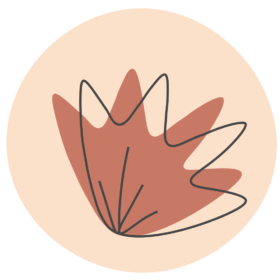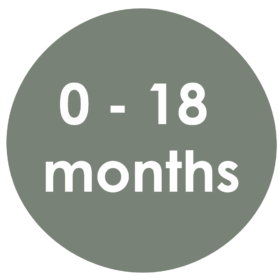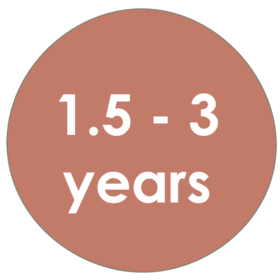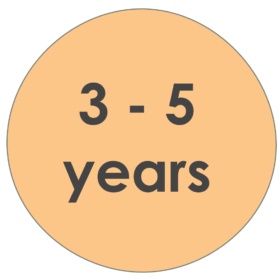-
×
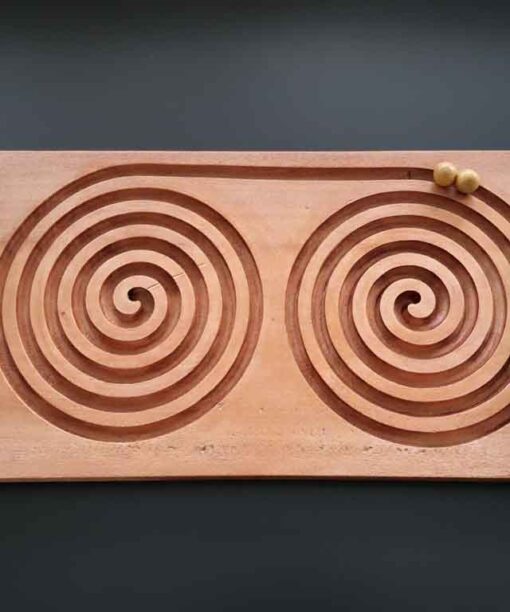 Wooden Double Spiral Board
1 × ₹690.00
Wooden Double Spiral Board
1 × ₹690.00
Brain Development
Bilateral Coordination & Activities
Bilateral means ” Both sides”. And Bilateral cooridnation is the ability to use both sides of the body at the same time and organized way. It’s a critical developmental skill that supports everything from walking and writing to cutting with scissors and playing sports. This coordination involves the brain’s ability to communicate between the left and right hemispheres so both sides of the body can work together smoothly.
Why It Matters for Kids
Motor skills: Helps with tasks like eating, dressing, catching a ball, or writing.
Academic skills: Children need bilateral coordination to read (eyes move smoothly across a page), write, and manipulate school tools.
Physical confidence: Smooth movement builds confidence in sports and play.
Brain development: Encourages communication between brain hemispheres, important for problem-solving and concentration.
Daily independence: From brushing teeth to buttoning shirts, many daily tasks depend on this skill.
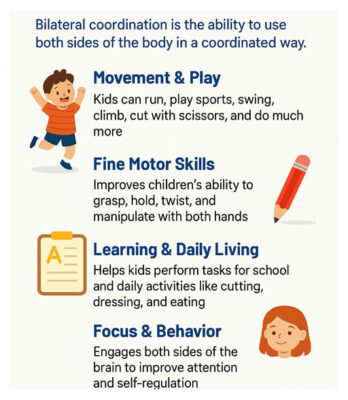
HOW DO I KNOW IF MY CHILD HAS POOR BILATERAL COORDINATION ?
Some indicators of poor bilateral coordination include:
- Trouble cutting with scissors, Struggles with drawing, or holding paper
- Fatigue or frustration during two-handed tasks
- Poor handwriting or difficulty copying shapes
- Struggles with handwriting.
- Difficulty tying shoes.
- Having a hard time dressing themselves (pulling on socks, pants, and shoes).
- Trouble with fasteners, like buttons, zips, or snaps.
- Clumsy movements, trouble crawling, running smoothly, or using playground equipment
- Trouble catching a ball.
- Awkward clapping.
- Troubling using a bicycle pedal.
Parents should be aware that bilateral coordination comes in three distinct types: symmetrical movements, reciprocal movements, and leading/supporting movements.
Symmetrical coordination – both hands or legs do the same thing (e.g., clapping, jumping).
Reciprocal coordination – one side does the opposite of the other (e.g., crawling, pedaling a bike).
Asymmetrical coordination – one hand leads, the other supports (e.g., cutting with one hand while holding paper with the other, tying shoelaces).
Activities for Practicing Bilateral Integration
This is a sub title Support Brain Development, motor skill & focus through play !!
Brain-Boosting Tools & Ideas
Trace an infinity shape on a Lasy 8 board
Use a spiral board for finger tracing
Pop bubbles using both hands
Toss & catch with both hands or across hands
Help kids build: Hand-eye coordination, Focus & attention, Reading & writing readiness, Confidence in daily tasks
Symmetrical Movements
(Both sides doing the same thing)
Clapping games & songs (e.g., “Pat-a-cake”)
Jumping jacks
Rolling playdough with two hands
Marching in place
Reciprocal Movements
(Alternating sides in rhythm)
Crawling like a bear or baby
Riding a tricycle or balance bike
Cross-crawl touches (right hand to left knee, then switch)
Animal walks (crab walk, bear crawl)
Leading/Supporting Movements
(One hand leads, the other supports)
Cutting paper with scissors
Threading beads or lacing cards
Drawing while holding paper
Opening jars or twist caps

